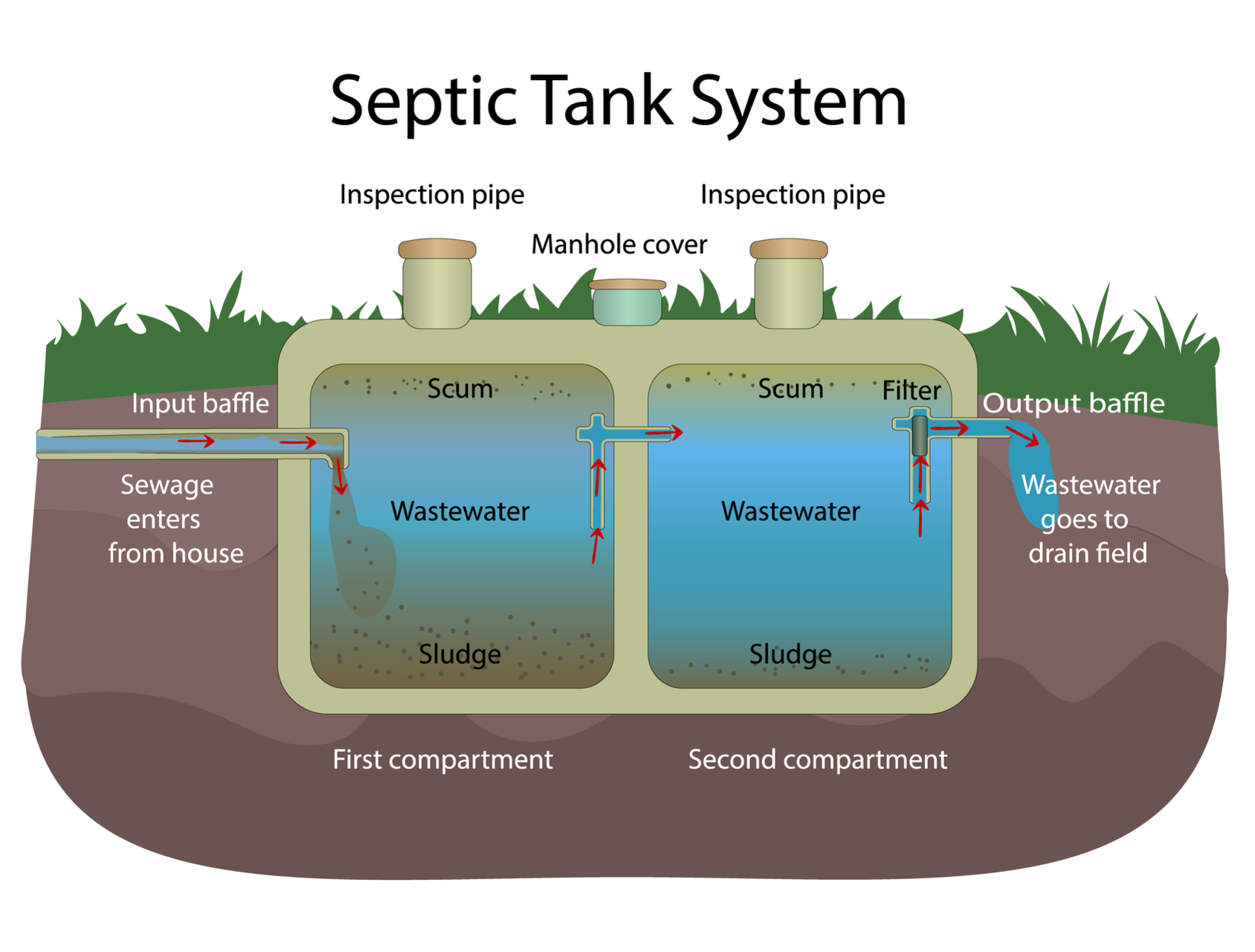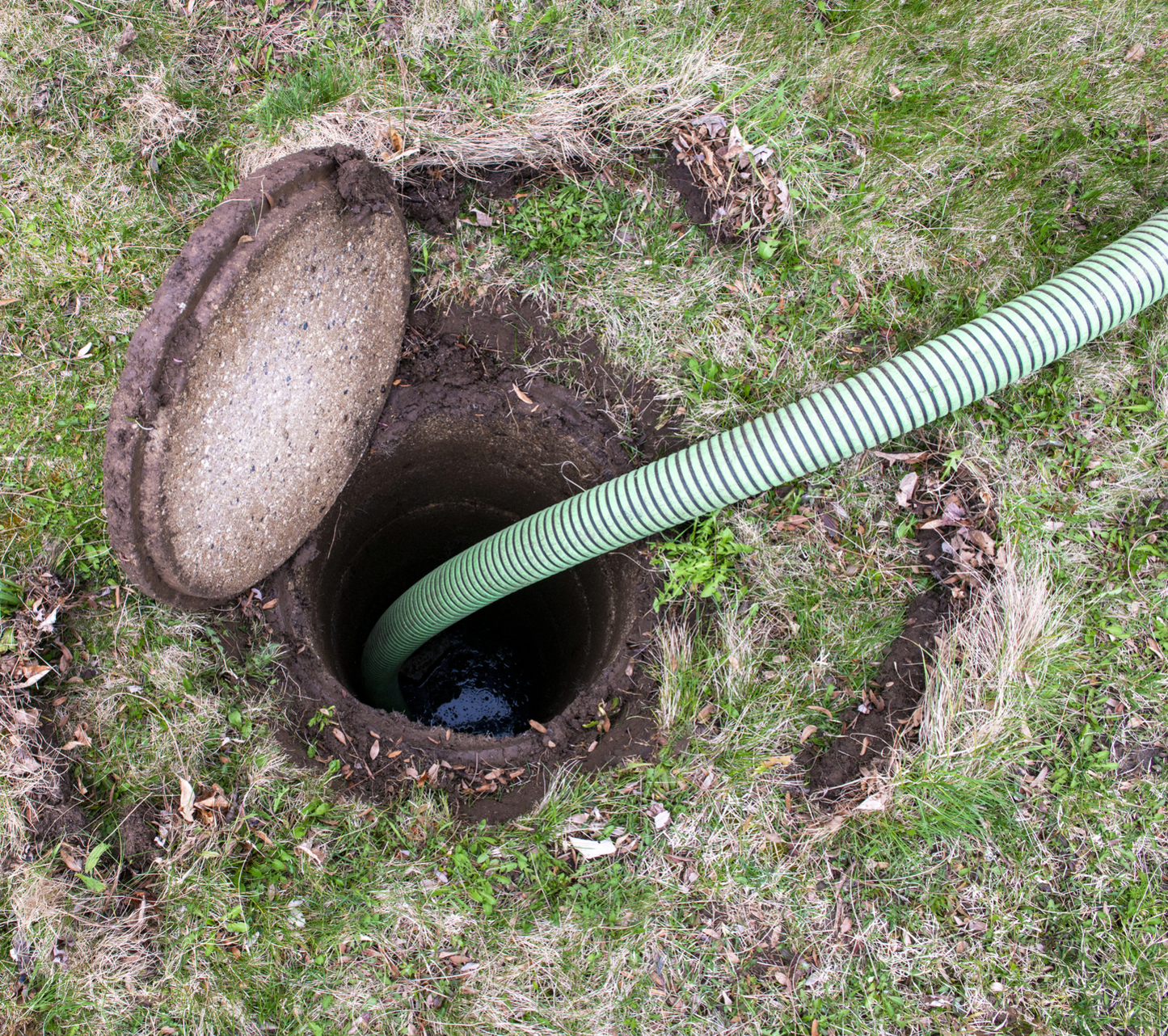How to properly care for a septic tank
Posted on 31st January 2023 at 09:28
If you own or live in a property, it’s vital to know if you have a septic tank, if you’re responsible for its maintenance and how to properly care for it. Improper care can lead to disastrous effects such as contamination of nature and wildlife.

What is a septic tank and why do we use them?
A septic tank is a large container that is stored underground and made from a robust material such as concrete. They have a fairly simple design, enabling the treatment of wastewater and allowing biological decomposition and safe drainage. This is done by the process of separating solids from wastewater. The wastewater is then safely drained away while the bacteria begins to naturally decompose any remaining waste.
Using a septic tank allows you to safely dispose of wastewater if your property has poor drainage or doesn't have access to a mains sewage network.
Sewage tank system
In this infographic, you can see how the process happens. Waste from your property leaves and enters the tank. Then your septic tank will begin separating the solids. Once separated, wastewater safely exits from the output baffle and enters the drain field.
Septic tanks are a useful and reliable way to manage and safely dispose of wastewater. But this is only the case if you know how to care for it and ensure it remains in good condition.

Why you need to care for your septic tank
Although your septic tank does the hard work, it still needs emptying and regular maintenance. If you don’t have your septic tank emptied, the solids will begin to build up, and the capacity of the tank will reduce. This means every time you flush the toilet or have a shower, the wastewater builds up further inside your septic tank. This will lead to blockages and leaks. Other issues you might experience if you don’t properly care for your septic tank include:
• Unpleasant smells around the area,
• Wastewater backing up into the property,
• Damp and muddy areas over the drain field.
If you’re experiencing any of these issues, get in touch with your local drainage team as soon as possible. These problems can quickly become serious and will need to be dealt with promptly.
How to properly care for your septic tank
The good news is that it’s not difficult to take care of your septic tank. Here are the main things to do to extend the life of your septic tank and prevent any leaks from happening:
Regularly empty the septic tank
Most septic tanks should be emptied at least once a year. But the frequency will also depend on how many people are in the household. If a large number of people live in a property, then they may need to have their septic tank emptied every 6 months. If you’re unsure, speak with a drainage professional who will be able to give you a better idea of how often you should have your tank emptied.

Regular Inspections
We recommend inspecting the drain fields every couple of months to watch out for leaks or damages. As well, you should have the septic tank regularly inspected by a professional to examine its condition.
Important: Don’t attempt to examine inside the septic tank yourself, as the bacteria inside is dangerous.
Look after your drains
The condition and functionality of your septic tank starts with your drains. Be aware of what you’re putting down the drainpipes and avoid flushing unsuitable items down the drain. If you want to learn more about what to avoid putting down your drains, check out our previous blog.
What to do if you have a problem with your septic tank
If you suspect there’s an issue with your septic tank, get in touch with Semilong Services as soon as you can. Our team of drainage experts are equipped to handle septic tanks of all sizes.
To get in touch by calling us today on 01604 492701.
Tagged as: Drain Care, Septic Tank
Share this post:





